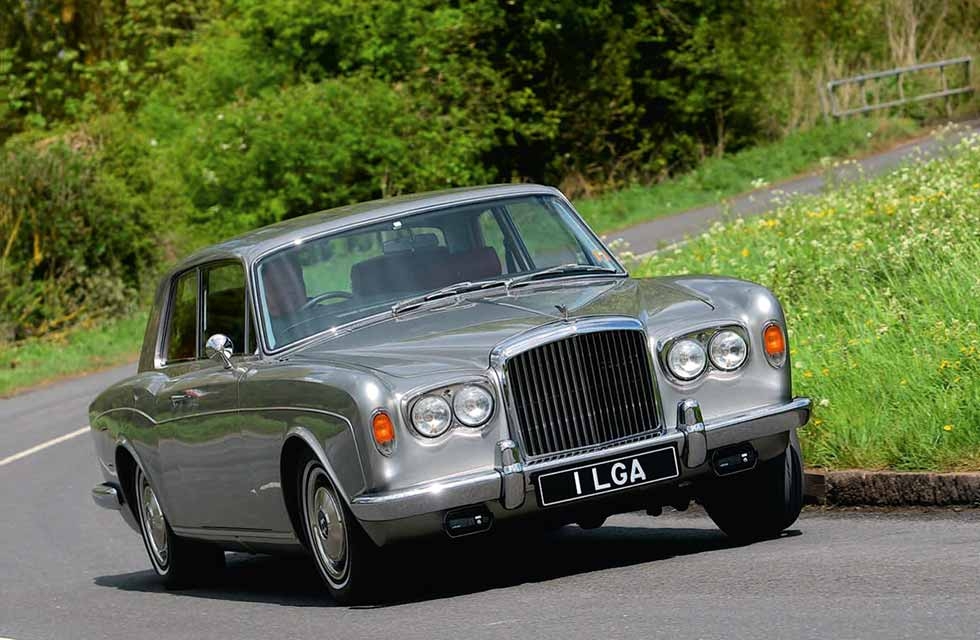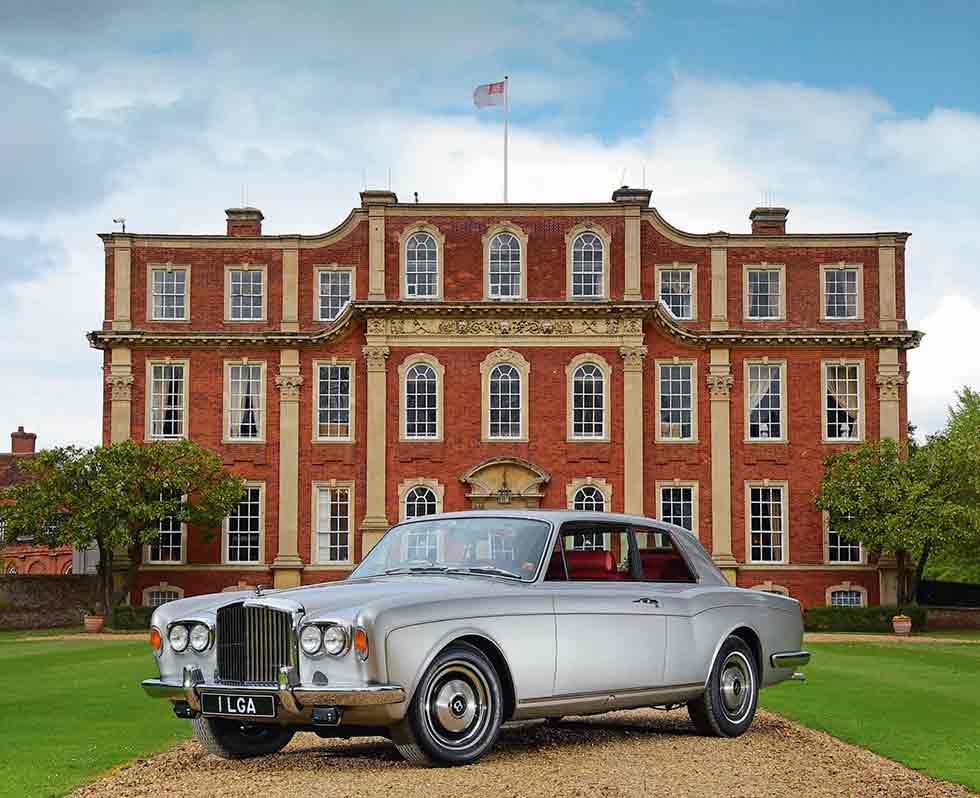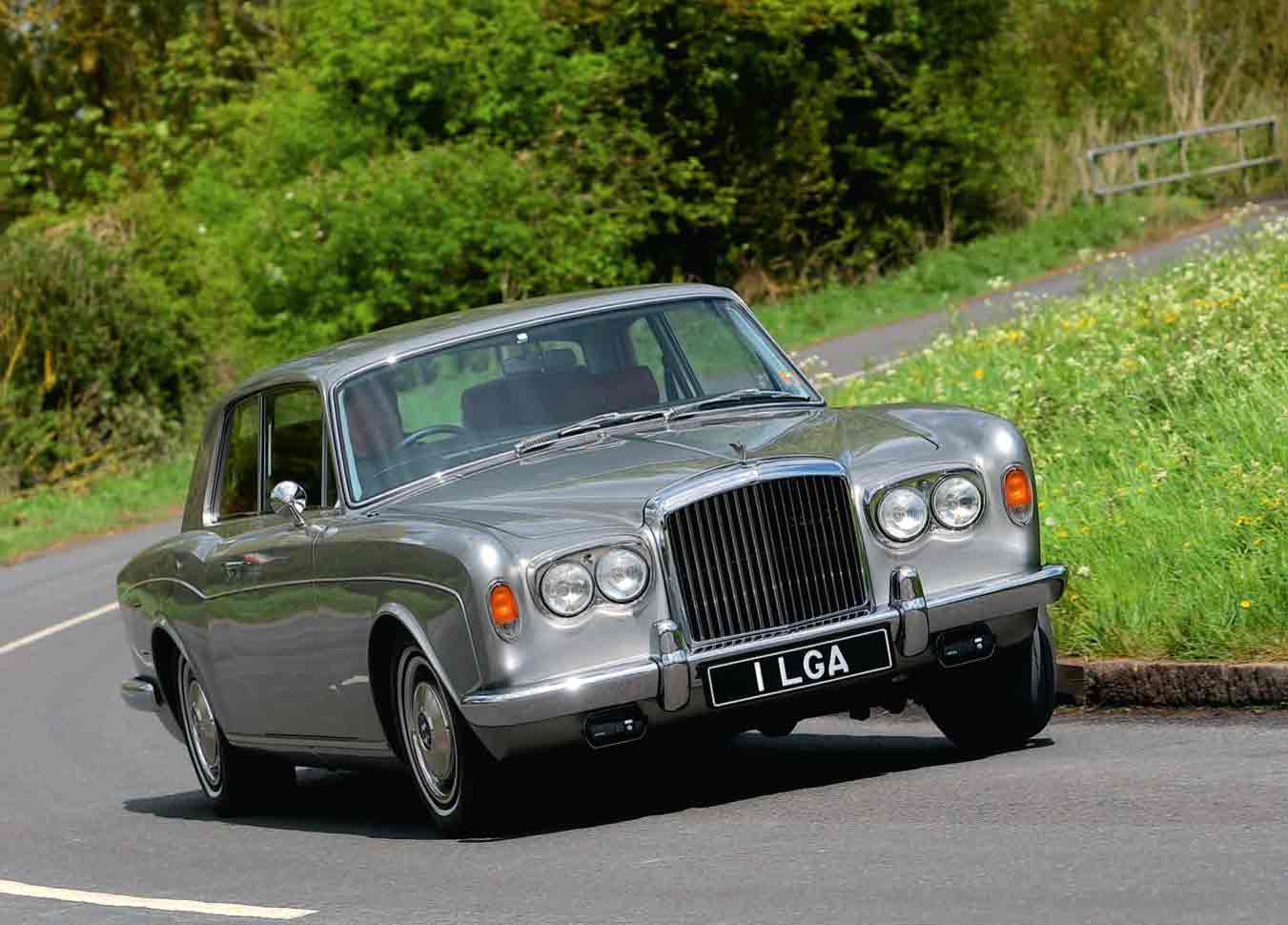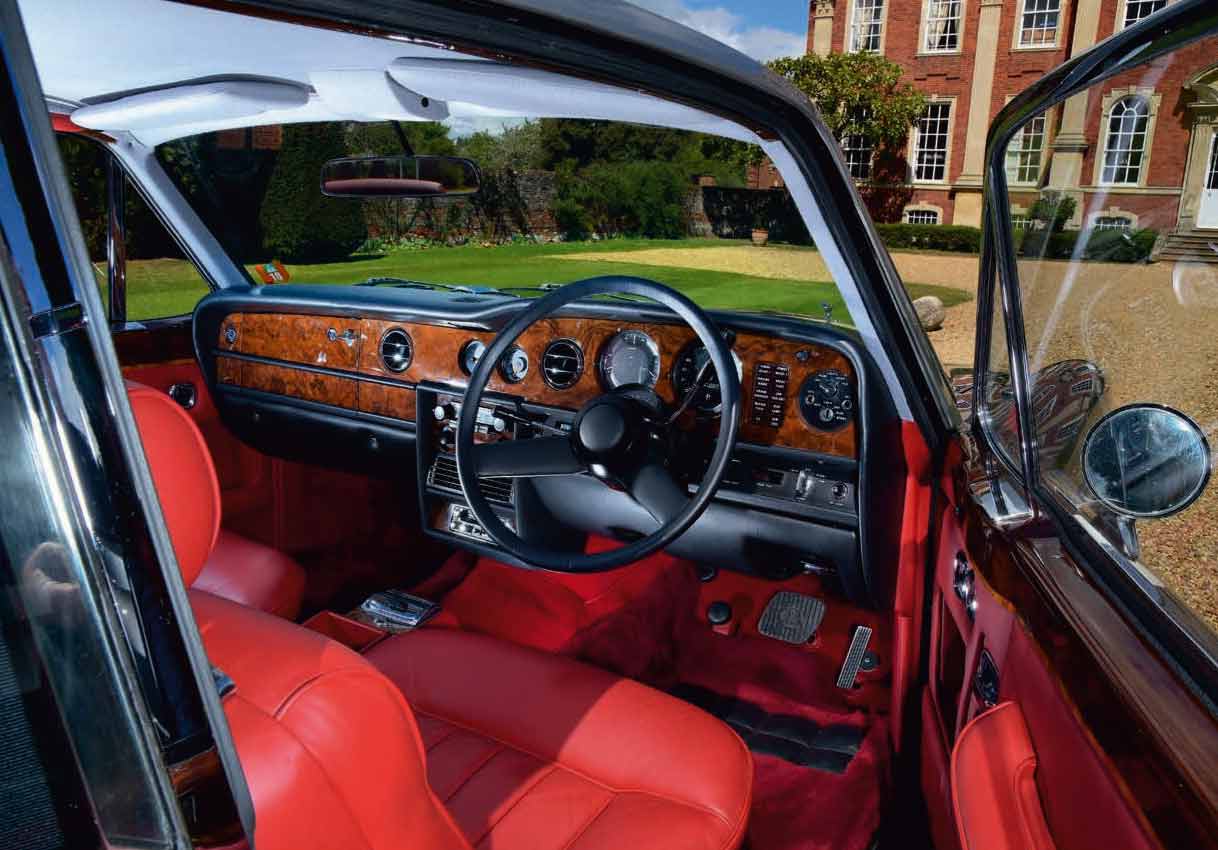
If a job’s worth doing… When specialist knowledge and an enthusiastic owner combine, the results are staggering. Words Martin Buckley. Photography Will Williams.
IMMACULATE CONCEPTION
A beautifully restored Bentley Corniche
You know that the fortunes of a previously underappreciated model are on the up when the fine definitions between the variants acquire a fresh significance. All at once, a new means of talking a particular car up (or down) is suddenly at our fingertips. For example, I didn’t know there was an unofficial ‘Mk1A’ variant of the first chrome-bumper generation of Corniche: a handful of right-hand-drive cars built in ’1975 and ’1976 that look outwardly identical to those produced since 1971, but have improvements more associated with rubber-bumpered post-’1977 cars based on the Shadow II.

There was nothing new in this. Since the late ’60s it had been Crewe policy to test its latest innovations on its most expensive coachbuilt versions before rolling them out in the ‘volume’ model – 1979 Corniches, for instance, got the new 1980 Silver Spirit-type rear suspension. Sliding behind the wheel of this car, freshly restored to an exquisite standard by marque specialist Hillier Hill, the first thing you notice is the Shadow II-style fascia and split-level air-conditioning system, a combination first seen on American-market left-hand-drive Corniches.
What you can’t see, under the graceful Mulliner Park Ward two-door coupé body, are the fully powered brakes (no master cylinder) and the differently configured exhaust system, unique to the ’1976 cars. Trifling stuff, maybe, but important if you need to know such things: there’s a little anorak inside us all, after all. This is just the icing on the cake for a car I consider to be one of the best-looking post-war Rolls-Royce or Bentley models that, while never having the cachet of its glamorous two-door Continental predecessors, has an understated chic of its own. Another clue to the rising appreciation of these cars is the fact that owners are starting to spend real money on getting them right.

“The market changed the moment Bentley brought out the Continental GT,” says Ray Hillier.
“When the marque’s exclusivity began to evaporate, people started looking at the older cars – suddenly they were interested in looking after them properly. Models that don’t have the value in them, maybe, but they just want them right anyway. We know people who have gone into a modern Bentley and come back to the older models. I don’t want to knock the new car, but it’s a different animal. Even with a standard Shadow or a Spirit people are spending money because they like how they drive, although part of the problem with the older cars is that they take huge abuse and keep going – people don’t know there’s anything wrong half the time.”
With the Corniche, buyers are beginning to realise how rare and special they are. These are coachbuilt two-doors that took up to six months to produce and cost double the price of the standard Silver Shadow or T1. Bodies (sharing almost nothing with the Shadow) were built at Hythe Road in London (on a floorpan supplied by Pressed Steel), sent to Crewe for the drivetrains, then returned to London for finishing.
‘There’s a silky isolation, a spooky freedom from wind noise around the doors, and no more than a hum from the V8’
Despite the economic and social woes of the ’70s, the Corniche was at the height of its popularity, but as a convertible, not a fixed-head coupé. The 1975 announcement of the Camargue had made the fixed-roof Corniche, with its superficial resemblance to the Standard Steel Silver Shadow, ever so slightly superfluous to buyers with £33,000 to spend when, for another £7000, they could have a Camargue.

This super-rare Corniche tells the story not only of the decline in popularity of the handsome fixed-head model, but also the sad decay of the Bentley name generally in the consciousness of buyers since the mid-’60s. In the era of the Silver Clouds and S-types there was near parity of sales between the two marques, so how did Bentley decline to just 6% of total Crewe sales during the Shadow/T1 period? Of more than 40,000 Shadow-based cars, just 2585 came with the ‘Flying B’ between 1965 and 1980. Of those, most were standard T1 and T2 four-doors. Just 27 Corniche coupés came with the Bentley grille between 1971 and ’1976.
This car, chassis CBH24209, is the last of the six so-called Mk1A right-hand-drive cars built between October 1975 and July 1976. Half were for UK buyers, the rest for Tokyo, Dublin and Australia. It was finished on 7 July 1976 for a recently incorporated (but evidently successful) firm of metal-finishers in Shropshire, and ordered, via Broughtons of Cheltenham, in Silver Mink with the then-popular Everflex roof. Its history between then and Hillier’s first encounter with it in 2016 is unknown, but it had clearly been fairly well looked after.
“It was quite a nice car,” he remembers, “but with cracks and sinkage in the paint. The customer, Chris Chambers, didn’t want to paint it at first, but the problem was that while it was very presentable in some ways, any attempt at half measures would make it look like Joseph’s coat. It was the same story with the interior and engine bay: do it properly – or leave it alone.”
It had been cared for and was running and driving well, complete with a Harvey Bailey handling kit. But Hillier pointed out that this was a chance to incorporate in-depth improvements only possible during total disassembly.
“As I was explaining this,” recalls Hillier, “I could see that this guy cared and really wanted something ‘right’ – but not a museum piece. He wanted to use it, so it had to be as driveable and refined as possible.” Hillier didn’t suggest a ‘restoration’ as such. But once you’ve dropped the subframes, removed the engine, taken out the interior and bare-metalled the body, there is probably no other name for it: “To his credit, Chris gave us the go-ahead. I was looking forward to the job by then, because I knew that we could do the car justice.”
First, the Corniche was stripped of its trim, interior, glass, and front and rear suspension subframes, complete with springs, height-control valves and complex braking system.
With everything catalogued and photographed, these units were repainted, re-piped, re-springed and overhauled with new seals for bearings and brake calipers, right down to details such as new lock and adjusting nuts. Anything that couldn’t be replaced with a new part was refurbished – height-control rams, roll restrictors, solenoid valves – and all the subframe mountings were renewed and the driveshafts rebuilt. Hillier rarely blows the firm’s trumpet, but his modest claim that the car is “as shiny underneath as it is on top” has to be pretty accurate. Although remedial fabrication work was needed on the sills and arches, the body was fairly solid.
An early decision was taken to get as much refinement as possible back into the car, while preserving its original look. On the other hand, since it had already lost its Everflex roof, it didn’t seem a liberty to repaint it a Ferrari silver grey called Grigio Notte, deliciously combined with a retrim in Hotspur Red leather: “The customer was concerned about not keeping it strictly original, but in the end I just pointed out that it was his car and he could do what he liked.”
Hillier Hill uses two local bodyshops that do Pebble Beach-standard paintwork, along with a couple of different trusted trimmers and wood-veneer people. “After 30 years you get to know what you want and where to get it,” says Hillier, who joined forces with Tony Hill in 1985 to form their eponymous firm. Both men did their apprenticeships in the service department of the Rolls-Royce Hythe Road depot where the Corniche was partly made.
So Hillier was clearly the right chap to inspect the car mechanically and replace or refurbish anything worn, as requested by the owner. Removal of the 6.75-litre aluminium V8, to detail the satin-black engine bay, brought perhaps the only really unpleasant surprise of the project: “Somebody had bunged up the telltale holes in the sides of the block, which indicated that they had been leaking because the liner seals had hardened with age. Chris wasn’t thrilled, but didn’t hesitate and agreed to an engine rebuild.” All the external plated underbonnet components were sent for specialist refinishing. Hillier even had the labels that sit on the hydraulic reservoir remanufactured.
Throughout the 18-month project, whenever the customer had two choices – to do it right or make an acceptable compromise – he always chose the former: “He was great. It was nice dealing with someone so hugely enthusiastic. He even kept turning up with bits and pieces he had found, which were mostly correct.”
While the body was away being prepared and painted, work continued on the trim and electrics. The chrome went to Derby Plating and parts of the air-con received specialist attention, but items such as the wiper and electric-window motors were rebuilt in-house, with the wiring replaced as required. There were only a few niggles, mainly the rear ’screen – eventually sourced from Pilkington via Flying Spares, which also found a new set of the coveted Corniche-only brushed stainless-steel hubcaps.

With the shell returned, the car started to come together. Newly veneered wood sets, headlining and the retrimmed front and rear seats were fitted, plus new carpets. With all its opening panels refitted and adjusted for gaps and closing, it was time for a first road test: “We did all our shakedown runs to get rid of creaks and make adjustments. We spent a lot of time tweaking the doors to get rid of any wind noise, setting up the window frames and getting them to sound and look right when you shut them.”
Finally the day arrived when Chambers collected his ‘new’ Bentley Corniche. For Hillier it was almost an anticlimax: “He just turned up and said, ‘Thanks, lads, I’m off to Switzerland!’” And that’s exactly what he did for the car’s inaugural run, the only issue being a slight driveline vibration. In the end, a Silver Spirit-type CV conversion (an official retrofit from the factory) has since transformed it.
Driving this car is a delightful insight into what a Corniche was like when new. It feels a cosy, personal car with a fairly low roofline, but with four real seats and the usual assertive driving position. The leather is soft and fragrant, the detailing superb, the split-level air-con obediently efficient – although I have to admit I prefer the earlier dashboard.
It has authority on the road, but is usefully narrow and almost handy in the way it deals with any situation. There’s a silky, ethereal isolation from the outside world, a spooky freedom from wind noise around the doors, and no more than a hum from a V8 that, via a beautifully smooth throttle-pedal action (commanding a pair of SUs), wafts the car forward with a suave muscularity that impresses, but never alarms.
The smallish, leather-covered wheel somehow gives you a better-than-usual impression of the steering, which has a lovely lightness commensurate with the effortless nature of the car; you can put it where you want it on the road without the need for the last word in feedback. The slippery seats probably put the greatest limit on the cornering power of the Corniche.
The matched Harvey Bailey roll bars and dampers banish most of the wallow and understeer, so ‘taking a line’ through fast curves feels totally natural, yet still with a louche, hefty, luxurious feel. I loved it, and so does the owner. “I’ve had multiple classic cars – including Aston Martins – restored to concours standards by marque specialists,” enthuses Chambers, “and in my opinion, this is at least the equal of any of them.”
This isn’t Hillier Hill’s first ‘as-new’ Corniche, but Ray underlines that the firm doesn’t only take on top-end work: “We just had a client who wanted a car done a certain way.”
To restore a machine this complicated to this level is an accomplishment not to be sniffed at. I don’t think I’ve driven a better Rolls or Bentley, and certainly not a better Corniche.
Bentley Corniche FHC
Sold/no built 1971-’1976/27 RHD, plus 16 LHD
Construction steel unitary, with aluminium opening panels
Engine all-alloy, ohv 6750cc V8, twin SU HD8 carburettors
Max power 180bh at 4500rpm (officially not disclosed)
Max torque 390lb ft at 2700rpm (officially not disclosed)
Transmission GM three-speed auto, RWD
Suspension independent, at front by double wishbones, anti-roll bar rear semi-trailing arms; coil springs, self-levelling f/r
Steering power-assisted recirculating ball
Brakes powered discs, three circuits
Length 16ft 11 ½ in (5169mm)
Width 6ft (1829mm)
Height 4ft 10in (1473mm)
Wheelbase 9ft 11 ½ in (3035mm)
Weight 4800Ib (2177kg)
0-60mph 9.6 secs
Top speed 120mph
Mpg 11-15
Price new £33,000
Price now £100,000






